Sensational Serengeti
I tell you what - it's hard to keep up with this friend of ours!! Jane now brings you the latest news from her adventures in Africa - in particular visiting the Serengeti in Tanzania and witnessing the amazing wildebeest migration!!
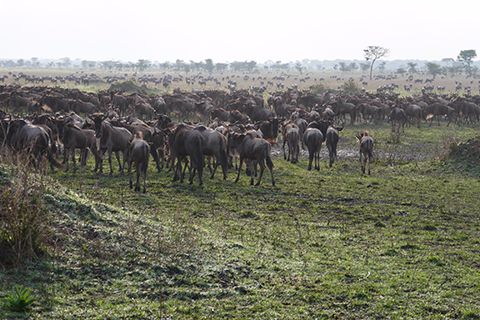
Over to Jane....
Bags loaded and boxed breakfast on my lap, it was still dark as we left Ngorongoro for the 2 hour return trip to Manyara airport. The last hour was bitumen road - pure bliss to experience a smooth ride. I was at the airport in plenty of time, but a young lady rushed out - Miss Jane, Miss Jane, hurry as your plane is leaving early. Carrying my bag to the aircraft and when I asked did she like her job, she replied with a big smile - I have a dream - to be a pilot.
It’s a big dream and I wished her well, thrilled when I asked for her photo in front of the plane.
Days start at 6:30am. We spotted more giraffes, zebra, topi, hyena, mongoose, baboons, gazelles and elephants. Vultures circle the sky - we spotted several groups finishing off a carcass or so full they could hardly fly.
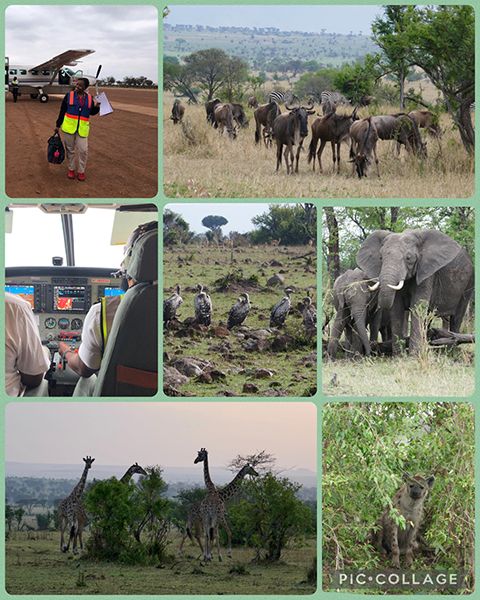
It was an hour to Lamai where I met my new guide, Albert, for the next 3 days to explore the Serengeti. The name, Serengeti, is derived from the Maasai word siringit, meaning “endless plains”. As my days here unfolded I could see why.
The greater Serengeti ecosystem stretches over 30,000 Sq kms, covering 7 key parks or reserves. I am visiting 3 - Serengeti National Park proper; Ngorongoro Conservation Area; and from tomorrow the Masai Mara National Reserve in Kenya.
It’s only 1/2hr to the lodge but Albert suggested we use the morning to spot some wild life. In no time, such a thrill to spot giraffes and elephants as well as lots and lots of wildebeest. At this time of year it’s often raining here and the vast open plains are lush with fresh grasses, perfect for the millions of wildebeest passing through, crossing the Mara river and heading north.
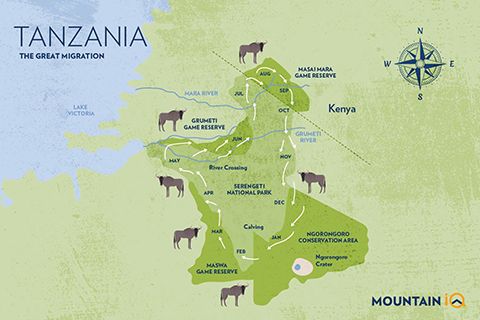
This is part of the Great Migration made up of anywhere between 1.5 million to 3 million wildebeest (depending on who you believe) , as well as 200,000 zebra, and smaller numbers of gazelle, eland, and impala. It is the largest and longest overland migration in the world. The herds travel a total of 800km, or more, during each cycle, following the rains and seeking out the best grasses. Although zebra and wildebeest migrate together, they graze in harmony as they each eat different parts of the same type of grass.1
The days highlight was watching the many thousands of wildebeest cross the Mara river or its smaller tributaries.
They start to gather in large herds, could be thousands, this can take several hours until those at the front finally build up enough courage to make a leap into the water, dashing across at break neck speed, climbing the opposite bank to safety.
Then the rush is on as others follow. Many break bones, get crushed in the rush or attacked by crocodiles. At the first river crossing I witnessed, wildebeest were lining up as far into the distance as I could see - must have been kilometres, bunching up together, then splitting off, deciding to retreat and then re-joining the pack. Watching as they threw themselves into the water, a fascination and then to finally see them gallop to safety on the other side. 1
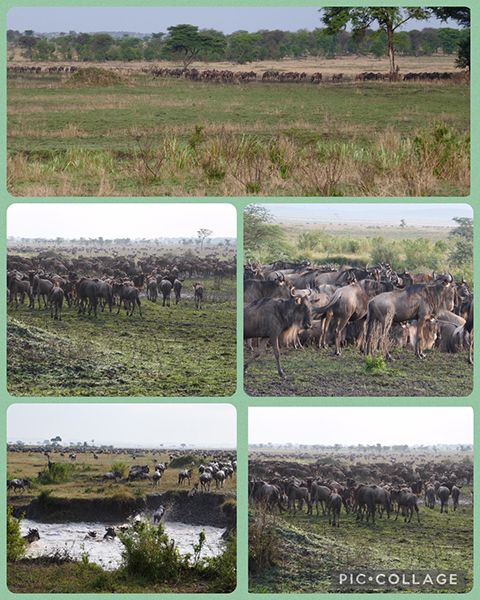
Wildebeest have no leader, hierarchy or family groups. Half a million calves are born each year in the Southern Serengeti at the start of the migration cycle between January and March. Most are born in mid-February when approximately 8,000 wildebeest are born every day for about three weeks. They can walk as soon as they are born and run witHin 10 mins so they can keep up with the herds! The numbers are staggering.1
The migration kills off around 250,000 wildebeest and 30,000 zebra every year, by thirst, hunger, and exhaustion, as well as crushes and drownings in stampedes of nervous animals. Many carnivores feed off of the wildebeest too, including lion, hyena, African wild dog, cheetah, leopard and crocodile - a true circle of life. 1
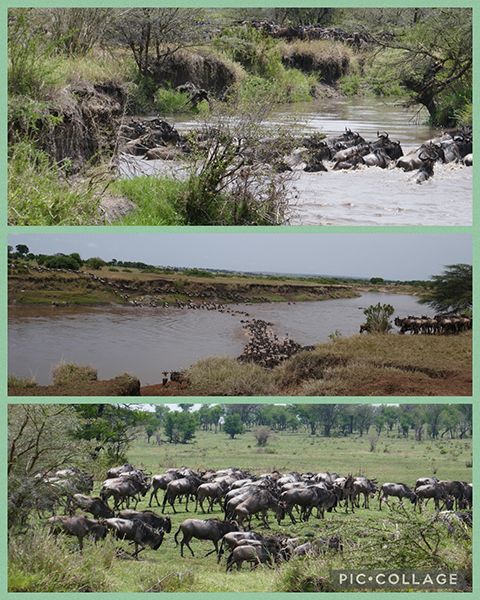
If you want to see one of the most amazing wildlife spectacles on the planet please watch this video which although I didn’t film this captures the essence of what I witnessed - once the wildebeest start crossing the river it can go on for several hours. An incredible sight.
Around the lodge wildebeest wander through at night, a lion has been heard and evidence of elephants too! We are safe though as guards patrol and escort us to and from the tents once it’s dark.
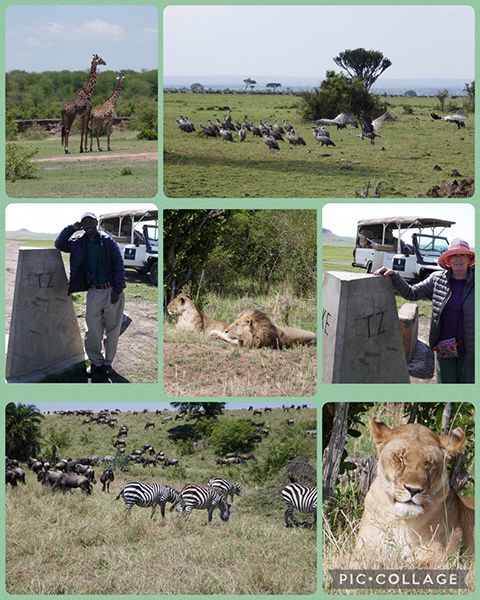
The next day we drove as far as the border to Kenya. Those on either side are not allowed to cross over, although we’re miles from anywhere but I gather rangers do patrol. The vast grassy plains a completely different vista to yesterday - thousands of black dots cover the landscape - they’re all wildebeest and other animals calmly grazing. Another element of the migration pattern.
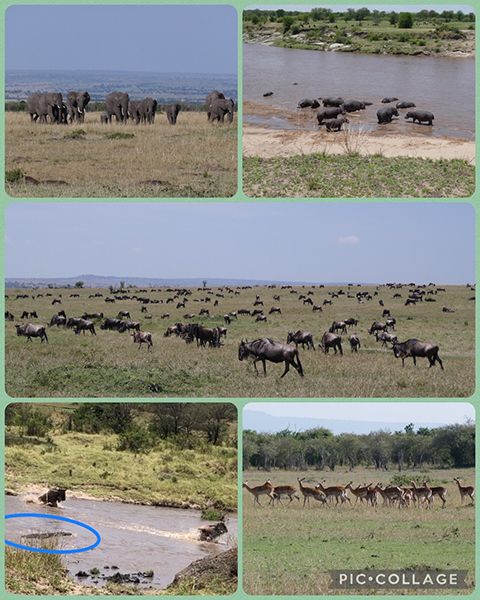
I am staying at the same chain of lodges, so the setup is similar here. The staff are delightful and the meals delicious, enjoyed at the main lodge with expansive views over the Serengeti plain. This is a movable camp, not that you’d know, except for the bucket shower. Water is a sparse commodity, so with 10mins notice John, my tent attendant prepares water to the desired temperature. It’s quite funny as he’s outside and shouts out that the shower is ready, then when I’m finished I shout out Asante Sana (thank you in Swahili). He’s most impressed on how quick and frugal I am.
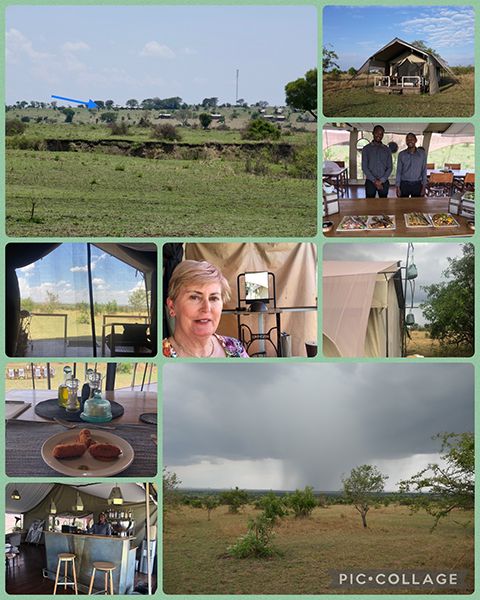
We spotted a few hyena, one pride of 3 lions and quite a few crocodiles, but leopards and cheetah alluded us. Poor Albert was so upset as until 2 days ago a female leopard with her cubs resided close by. We searched and searched to no avail. Perhaps I’ll have more luck in the Maasai Mara.
Credit
1.yellowzebrasafaris.com/inspiration
